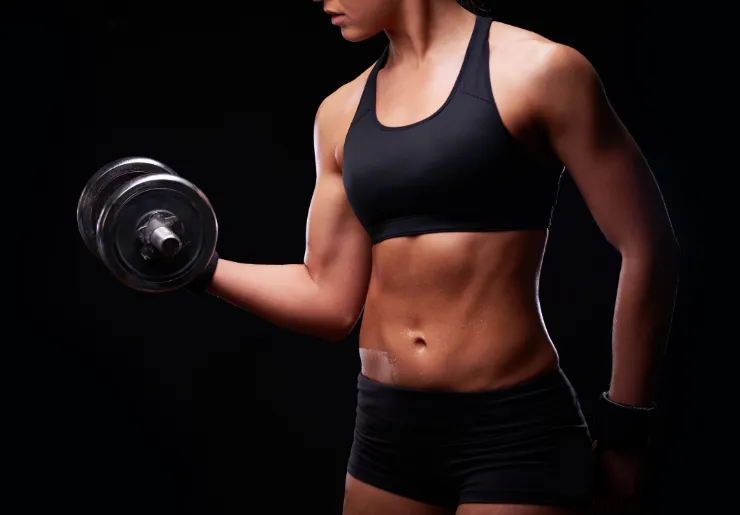
The Ultimate Guide to Building Bigger Biceps

The Ultimate Guide to Building Bigger Biceps
Why Training for Big Arms Is More Than Just Looks
Building muscle isn’t just about aesthetics—it’s about strength, joint health, and boosting your overall performance in the gym and daily life. Training your biceps directly can help with everything from lifting heavier weights to stabilizing your shoulders and elbows during compound movements.

Top 12 Biceps Exercises for Serious Growth
Let’s break down the most effective moves to help you build impressive arms. I’ll explain how to do each, why it works, and give you practical tips for maximizing results1.
1. Cheat Curl
How to do it: Use your hips and legs to help lift a heavy barbell, then control the weight slowly on the way down.
Trainer Tip: Focus on a slow lowering phase (about three seconds) for maximum muscle growth.
2. EZ-Bar Curl
How to do it: Use an angled EZ-bar for a comfortable grip and less wrist strain, curling up with elbows tucked.
Trainer Tip: Try different grip widths to target your biceps from various angles.
3. Chin-Up
How to do it: Grab a bar with palms facing you and pull your chin over the bar.
Trainer Tip: This compound move hits both your back and biceps hard—perfect for upper body strength.
4. Alternating Supinating Curl
How to do it: Curl one dumbbell at a time, rotating your wrist from neutral to palm-up as you lift.
Trainer Tip: This twist maximizes biceps activation and forearm development.
5. Barbell Spider Curl
How to do it: Lie chest-down on an incline bench and let your arms hang straight down as you curl.
Trainer Tip: Focus on squeezing at the top for a strong peak contraction.
6. Incline Dumbbell Curl
How to do it: Sit back on an incline bench and curl with arms hanging straight down.
Trainer Tip: This stretch position targets the long head of your biceps for a fuller look1.
7. Single-Arm Preacher Curl
How to do it: Use a preacher bench to isolate one arm at a time.
Trainer Tip: Great for correcting muscle imbalances and focusing on strict form1.
8. Single-Arm Low Cable Curl
How to do it: Face away from a low cable and curl the handle, keeping your arm slightly behind your torso.
Trainer Tip: Cables provide constant tension, boosting muscle growth even with lighter weights1.
9. Concentration Curl
How to do it: Sit down, brace your elbow against your knee, and curl a dumbbell up.
Trainer Tip: Watch your biceps work in the mirror to improve the mind-muscle connection1.
10. Zottman Curl
How to do it: Curl up with palms up, rotate to palms down at the top, and lower slowly.
Trainer Tip: This move targets both your biceps and forearms for balanced arm development.
11. Hammer Curl
How to do it: Curl dumbbells with your thumbs facing up.
Trainer Tip: This grip hits the brachialis and forearms, helping your arms look thicker.
12. EZ-Bar Reverse Curl
How to do it: Use an EZ-bar with an overhand grip and curl up.
Trainer Tip: Great for forearm strength and reducing wrist strain.
Understanding Your Biceps Muscles
Biceps Brachii: The main muscle, with two heads (short and long), responsible for elbow flexion and forearm rotation1.
Brachialis: Lies underneath the biceps and helps push the biceps up, making your arms look bigger
Brachioradialis: Runs along the forearm and is activated during neutral and overhand grip curls
How Often Should You Train Biceps?
Option 1: Add 2–3 biceps exercises after your back workout, 2–4 sets of 8–12 reps each.
Option 2: Do 1 biceps exercise at the end of your workouts, 3–5 days a week, for 2–3 sets of 6–15 reps.
Trainer Tip: Mix up your exercises and grips each session to maximize muscle development and avoid plateaus.
Progression and Variety Are Key
Use different grips and angles—like palms-up, palms-down, and neutral—to hit all parts of your biceps and supporting muscles.
Try mechanical advantage drop sets: Start with a challenging curl variation, then switch to an easier one (like hammer curls) to squeeze out extra reps.
Warming Up for Injury-Free Gains
Get your upper body moving with push-ups and band pull-aparts.
Do light, high-rep sets for both triceps and biceps before your main lifts.
Always start each exercise with a lighter warm-up set before going heavy.
Final Thoughts: Train Smart, Train Hard
Don’t let anyone tell you training for big arms is just for looks. Strong biceps mean better performance, healthier joints, and more confidence in and out of the gym. Stick to these proven exercises, focus on good form, and watch your arms grow1
